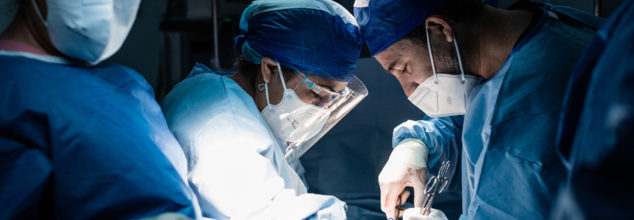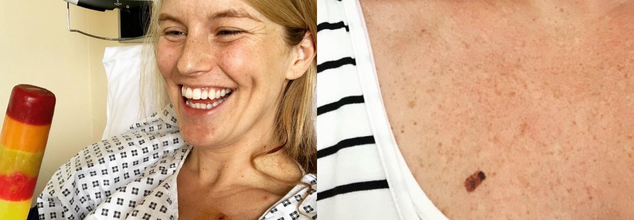- Health Conditions A-Z
- Health & Wellness
- Nutrition
- Fitness
- Health News
- Ayurveda
- Videos
- Medicine A-Z
- Parenting
- Web Stories
Don’t Miss These Subtle Signs Of Heat-Illness In Your Legs

(Credit-Canva)
With the ongoing heatwave, people have been very concerned regarding their health and well-being. While people may not realize it, heatwave not only is a natural hazard, but it has a great impact on society, which includes heat related deaths, as per the World Health Organization (WHO).
Heat affects us in many ways, whether it is affecting our body temperature, our appetite, or even our moods. However, one should not take high temperatures outside lightly. Heat can often trigger serious conditions, many of which need immediate action to rectify. One must know signs and early symptoms to avoid falling into a dangerous situation. One such sign of heat-illness can show up in your legs as well- Heat Cramps.
Pain in Your Muscles Due To Heat
Heat cramps are sharp, painful muscle spasms. They often happen when you're doing intense exercise or heavy work in hot weather. Not drinking enough water can make you more likely to get them. You'll most likely feel this pain or sudden, strong muscle tightening in your stomach area, arms, or legs. Remember, heat cramps can also be an early sign that you're heading towards heat exhaustion.
If you experience sudden, strong muscle tightening or painful twists, especially in your calves, thighs, or hamstrings, while working or exercising in hot conditions, it's a strong indicator of heat cramps. These cramps can be incredibly painful and are a direct result of dehydration and electrolyte imbalance. They can also be an early warning sign that you are heading towards heat exhaustion, so it's vital to address them immediately by resting, hydrating, and replacing lost electrolytes.
Heat-Related Illnesses And Types Of It
Heat cramps, along with some other illnesses, are types of heat stress. When you're in the hot weather, your body's amazing natural cooling system kicks in, sweating. As sweat evaporates from your skin, it carries heat away, helping to keep your core temperature stable. However, there are times when this system gets overwhelmed, and your body can get dangerously hot. This condition is known as heat stress. Understanding the different forms of heat stress and knowing how to protect yourself is crucial for staying safe in warm weather.
Dehydration
This is simply when your body doesn't have enough water. You lose water through sweating, and if you don't drink enough, you get dehydrated.
Heat Exhaustion
This happens if you stay in the heat for too long, especially if you're already dehydrated. Your body gets overworked trying to cool down.
Heat Cramps
These are painful muscle spasms. They often hit your legs, but can also affect your stomach or arms. They usually happen when you're working or exercising hard in the heat.
Heat Syncope
This is when you feel dizzy or even faint because of the heat.
Heat Rash
This looks like small red bumps on your skin, often in areas where you sweat a lot.
Heat Stroke
This is the most serious kind of heat illness. It's an emergency where your body can't cool itself down anymore, and your body temperature rises very quickly.
How to Protect Yourself from Heat Stress?
Taking a few simple steps can really help you avoid getting sick from the heat:
Drink plenty of fluids: Make sure to drink water and sports drinks before and while you're out in the heat. Don't wait until you're thirsty!
Wear light, loose clothes: Choose light-colored clothes that fit loosely. This helps your body stay cooler by reflecting sunlight and letting air move around.
Stay out of the sun during the hottest time: Try to avoid being in direct sunlight between 10:00 am and 4:00 pm, as this is usually when the sun is strongest.
Find a cool spot: If you start to feel too hot, move to a cool place right away. This could be an air-conditioned building, a shady spot, or even just a cooler room indoors.
Doctors Removed 210cm Long Hairball From Teen's Stomach

Credits: Canva
In a landmark medical feat, doctors at SMS Hospital in Jaipur have successfully removed a 210-centimetre-long trichobezoar—a dense, compact mass of hair—from the stomach of a 14-year-old girl from Barara village in Agra district, Uttar Pradesh. This extraordinary case is believed to be the longest trichobezoar ever removed globally, surpassing the previous world record of 180 cm.
Rare Case Presents Major Surgical Challenge
The case posed significant surgical challenges. The trichobezoar had extended from the stomach into the small intestine, complicating the procedure. Surgeons were determined to extract it in one piece to avoid making multiple incisions in the intestine, which could increase complications.
Despite the complexity of the situation, the surgical team completed the operation within two hours and did not require a blood transfusion. In an impressive display of surgical precision, the entire hairball was removed intact.
Persistent Symptoms Lead to Diagnosis
The girl had been experiencing persistent abdominal pain and vomiting for over a month. Upon arrival at SMS Hospital, doctors noted a hard, elongated mass in her abdomen, stretching from her stomach to the area near her navel. A Contrast-Enhanced CT (CECT) scan revealed an unusually enlarged stomach filled with a foreign substance, prompting immediate intervention.
Pica: The Psychological Root
Doctors diagnosed the young patient with Pica, a psychological disorder in which individuals develop cravings for non-edible substances. Dr. Jeevan Kankaria from the hospital’s surgery department explained that the girl initially started eating chalk in school under peer influence. Over time, this progressed into the consumption of hair and other non-food items.
“During surgery, we found not only hair but also wooden pieces, rubber bands, stones, threads, and other inedible materials entangled in the mass,” said Dr. Kankaria, who led the surgical team.
A Record-Breaking Removal
“When we measured the trichobezoar after removal, it was 210 cm long, which we believe is the longest ever taken out from a human stomach,” Dr. Kankaria stated. The hospital is now in the process of submitting the case to the Guinness World Records for official recognition. Dr. Kankaria already holds four Guinness World Records for previous surgical milestones.
Patient’s Recovery and Future Outlook
The girl, a Class 10 student from a farming family, is currently recovering well under observation at SMS Hospital. Her post-operative condition is stable, and doctors expect to discharge her soon.
This rare case highlights the critical need for early intervention in psychological disorders such as Pica and the importance of awareness among parents and educators. Dr. Kankaria stressed that behavioral and psychological support will be essential in the patient’s long-term recovery to prevent recurrence.
As the medical team awaits potential recognition from the Guinness World Records, this groundbreaking surgery stands as a testament to the precision, planning, and teamwork of doctors at SMS Hospital—and serves as a crucial reminder of the unusual ways psychological disorders can manifest physically.
World No Tobacco Day 2025: Does Smoking Affect Women Differently Than Men?

Credits: Canva
On World No Tobacco Day, Dr. Sajjan Rajpurohit, Senior Director of Medical Oncology at BLK-Max Super Speciality Hospital, sheds light on how tobacco affects women differently than men. While the overall dangers of smoking are well known, Dr. Rajpurohit emphasizes the need to understand the biological, hormonal, and social dimensions that make women more vulnerable to tobacco-related diseases and challenges in quitting.
Biological Differences Make Women More Sensitive to Nicotine
“Women metabolize nicotine more slowly than men, which results in prolonged exposure to its harmful effects,” says Dr. Rajpurohit. This slower metabolism, combined with hormonal changes across a woman’s life—such as during menstruation, pregnancy, or menopause—can heighten nicotine’s addictive properties.
For instance, estrogen, a key female hormone, may increase sensitivity to nicotine, making it harder for women to quit. “This also explains why withdrawal symptoms might be more severe in women,” he adds.
Higher Risk of Certain Diseases
Women who smoke are more susceptible to certain diseases than their male counterparts, warns Dr. Rajpurohit.
Lung Cancer
Though men historically had higher rates of lung cancer, the gap has narrowed as more women took up smoking. “Women are not only developing lung cancer at younger ages, but they may also face more aggressive forms of the disease,” he says, pointing to biological differences in lung structure and function.
Heart Disease
Smoking significantly raises the risk of heart disease in women, especially those using hormonal contraceptives. “Smoking can cause the arteries to harden and increases the risk of heart attacks and strokes. When combined with birth control pills, the risk becomes even higher,” he explains.
Reproductive and Pregnancy Complications
Smoking affects fertility and reproductive health. It can lead to complications such as ectopic pregnancies, miscarriage, preterm delivery, and low birth weight. “Women in their childbearing years should be especially cautious, as smoking during this period can have lasting effects on both the mother and child,” Dr. Rajpurohit stresses.
He also highlights severe pregnancy-related risks like placental abruption (where the placenta detaches from the uterus) and placenta previa (when the placenta blocks the cervix), both of which can endanger maternal and fetal health.
Hormonal Imbalance and Fertility Issues
Nicotine disrupts hormonal balance, impacting ovulation and menstrual cycles. Women who smoke often report irregular periods and find it more difficult to conceive. “The damage is not just temporary—prolonged tobacco use can lead to long-term reproductive challenges,” says Dr. Rajpurohit.
Why Women Find It Harder to Quit
Quitting smoking can be a more difficult journey for women due to psychological, hormonal, and social factors.
“Many women smoke to manage stress, anxiety, or depression. This emotional dependence can complicate their efforts to quit,” Dr. Rajpurohit explains. Hormonal fluctuations during the menstrual cycle can also influence cravings and mood, making it harder to resist smoking.
Additionally, women may lack adequate support from family or peers. “Social encouragement plays a huge role in smoking cessation, and women often find themselves without the backing they need,” he says.
To help women quit, he recommends a tailored approach involving behavioral therapy, nicotine replacement therapy (NRT), and personalized quit plans. “These strategies must take into account individual stressors, emotional needs, and social settings,” he adds.
Secondhand Smoke and Societal Pressures
Women are often exposed to secondhand smoke in domestic environments, putting them at risk for the same diseases as smokers. “The dangers of passive smoking are real and can lead to respiratory illness, heart disease, and even pregnancy complications,” says Dr. Rajpurohit.
He also draws attention to how societal norms and advertising have historically influenced women’s smoking behavior. “Tobacco companies once marketed cigarettes to women as symbols of empowerment and liberation. Unfortunately, this portrayal led many to underestimate the health risks,” he notes.
In certain cultures, smoking among women may be normalized or not taken seriously, which further prevents intervention and support.
Empowering Women Through Awareness and Support
“Women face unique challenges when it comes to tobacco use, and we must address them with empathy and targeted strategies,” Dr. Rajpurohit concludes. On World No Tobacco Day, he urges women to seek help and become aware of the specific risks they face.
For those struggling with tobacco addiction, he recommends consulting healthcare professionals and exploring support systems that cater specifically to women’s needs. “The goal is not just to quit but to stay tobacco-free for life,” he says.
Surviving Skin Cancer Inspired This Mother To Develop Protective Vests To Cut Melanoma Risk

(Credit-Hannah Penn/LinkedIn)
“I thought having done it all before, second time around I’d know exactly what to expect from the 4th trimester. But my expectations were all shot to hell in June when, 10 days after Louie was born, I was diagnosed with skin cancer.”
Hannah Penn, a mother, as well as a working professional, who has been in her industry with 17 years of experience, never thought the devastating diagnosis of cancer was in books for her. Being diagnosed with skin cancer shortly after her second child's birth, she expressed her gratefulness for the quickness of the diagnosis and the swift way it was dealt with.
“I write this today eternally grateful and lucky enough to have had successful surgery, catching the cancer before it spread to further organs. The first urgent operation was carried out within 40 minutes of me being diagnosed”
News like this can be difficult for people to handle, shaking them to the core. However, Hannah took it in stride, and not only tackled the disease, but she also started working on ways to stop this.
As a worried mother, she looked into risk factors, causes and who are at risk for it. It was them that she came across statistics that showed that construction workers, who made 8% of UK’s workforce, were the most at risk. In fact, 44% of deaths associated with melanoma were occupational deaths of construction workers. Understanding the severity of this, she worked with a group of professionals to create a protective vest of sorts that could aid a lot of workers and keep them safe.
An Innovative Approach to Cancer: UV-Alert Vest
Hannah and her team, from Pablo Creative Agency, came up with the UV-U-SEE logo and "The Higher Vis Vest." These vests have a special silicone patch filled with material that changes color in the sun.
As the sun's strong UV rays get stronger, the patch changes from white to pink and then to red. This color change tells the worker and others nearby to put on sunscreen and be careful not to get sunburned. It's a simple way to remind them to protect themselves right away.
Hannah explained that getting cancer treatment while having a very young child was really hard for her. She worried about how the treatments might affect her baby, especially since her cancer was growing while she was pregnant.
This personal struggle made her look into facts about cancer risk. She was trying to find out if her children would be more likely to get melanoma because she had it. That's when she found surprising information about construction workers. She realized that if she had a way to see her own danger, these workers needed one too.
How Her Illness Uncovered The Critical Gap In Safety
Hannah was really surprised that there were no rules for skin protection on building sites, given how risky it is. Since nothing like this existed, she decided to create her own product. She felt that everyone facing such a high risk needed a clear way to see the danger they were in.
Besides construction, Hannah thinks this idea can help anyone who spends a lot of time outside, like people working at music festivals, athletes playing sports, or even just people going to the shops.
Hannah strongly believes that skin cancer can be prevented in most cases – about 86%. With the right steps and awareness, many lives can be saved. She said melanoma is like a "silent killer" that's easy to ignore. She was lucky her cancer was found in time and hopes her invention will help save other people too. Her team was very passionate about using their skills to highlight this deadly risk in construction and change how people act.
© 2024 Bennett, Coleman & Company Limited

